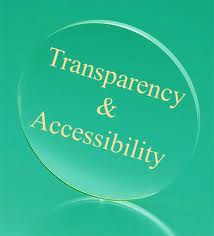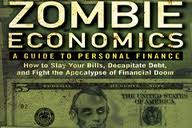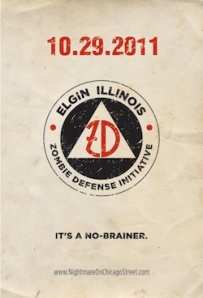 The President of the United States makes $400,000 per year not including benefits. A member of the Illinois House of Representatives earns $67,836 per year in addition to receiving a $132 per diem for every day they are in session. The CEO of Fifth-Third Bancorp earns $3,144,823 per year and has another $1,572,411 in restricted stock awards and $40,779 in other compensation.
The President of the United States makes $400,000 per year not including benefits. A member of the Illinois House of Representatives earns $67,836 per year in addition to receiving a $132 per diem for every day they are in session. The CEO of Fifth-Third Bancorp earns $3,144,823 per year and has another $1,572,411 in restricted stock awards and $40,779 in other compensation.
Dale Lonis is the Executive Director of the Elgin Symphony Orchestra (ESO) in my hometown of Elgin, Illinois. According to his agency’s 2009 990 tax return, his 2009 salary was $122,850 and his benefits package was valued at $8,594.
OK . . . I can hear many of you wondering why is it necessary to post this kind of information. After all, many of us learned at a very early age that talking about money-related topics is taboo in polite society. Well, the reason why a segment of our society has fought so hard for transparency in government, publicly traded corporations, and non-profits is as simple as this:
 Those who make a living with ‘other people’s money’ should be held to a higher standard.
Those who make a living with ‘other people’s money’ should be held to a higher standard.
Still not sure you agree? Please consider the following:
- Public servants are paid by “We The People” and we’re entitled to know what they are paying themselves to do “the people’s business”.
- Publicly traded corporations owe “the market” accurate information about how they transact business because without that information we end up with situations like ENRON, MCI WorldCom, and Tyco. When companies ask for public investment and act in less-than-transparent ways, people can’t make smart investment decisions . . . the free market fails to work efficiently . . . people unfairly lose money.
Can’t the same be said for non-profit organizations? Aren’t donors trying to make wise investment decisions with their charitable dollars? How many donors are happy when they learn their charitable contributions were misused by a nonprofit organization? I suspect that no one is every happy when that happens, which begs the question about the need for increased transparency in this sector. Doesn’t it?
Let’s circle back to the Elgin Symphony Orchestra and look at the facts (which I simply gathered from the organization’s 990 tax return):
- The board made a decision to pay their executive director $122,850 in 2009
- This agency brought in $2.5 million in revenue in 2009
- $696,179 in membership dues
- $162,269 in government grants
- $642,528 in direct contributions from donors
- $1,026,023 in ticket sales
- $22,000 in program book advertising
- $19,848 in performance fees
- This organization didn’t “balance its books” and ended 2008 with a deficit of $471,214 and ended 2009 with a deficit of $322,616
 Thanks to laws that require non-profit tax forms to be public information and websites like guidestar.org that publish 990 tax forms, donors are able to easily secure this information and make wise investment decisions. Even though the aforementioned information is just a small slice of what you can pull from an organization’s 990 form, a donor can make a number of judgement calls from it. For example, a donor can weigh how they feel about:
Thanks to laws that require non-profit tax forms to be public information and websites like guidestar.org that publish 990 tax forms, donors are able to easily secure this information and make wise investment decisions. Even though the aforementioned information is just a small slice of what you can pull from an organization’s 990 form, a donor can make a number of judgement calls from it. For example, a donor can weigh how they feel about:
- this agency’s revenue model (fees vs. fundraising)
- this agency’s fiscal health
- this board’s track record with key management decisions around budgeting, executive compensation, business model, etc
Disclaimer . . . I am not suggesting that Dale Lonis is being overpaid (in fact, I would guess it is in line with similar sized organizations in similar communities). I am also not suggesting that the board has made any poor decisions. I will leave all those judgements for each individual reader of this blog. All I am trying to do is make the case for the value of transparency in the non-profit sector.
Do you still think I am off-base? You may want to check-out what is happening in New York’s non-profit community. You might also want to look at what frogloop blog says about a Guidestar study that illustrates how little transparency exists in the non-profit sector.
I started this discussion with yesterday’s blog post by invited you to weigh-in with your thoughts and start a dialog about non-profit executive compensation and transparency.
Do donors deserve this kind of information? If not, then how can they make informed charitable giving decisions and how can they hold agency’s accountable for they promised during the solicitation call? What is your organization doing to become more transparent? Where are yours thoughts on transparency with executive compensation? Do you think a non-profit organization should be required to put its annual 990 tax form on file at your local library or on their website? Is the 990 form too obtuse? Does a non-profit need to be required to publish a small handful of key organization metrics on their website?
Here is to your health!
Erik Anderson
Founder & President, The Healthy Non-Profit LLC
www.thehealthynonprofit.com
erik@thehealthynonprofit.com
http://twitter.com/#!/eanderson847
http://www.facebook.com/eanderson847|
http://www.linkedin.com/in/erikanderson847
















